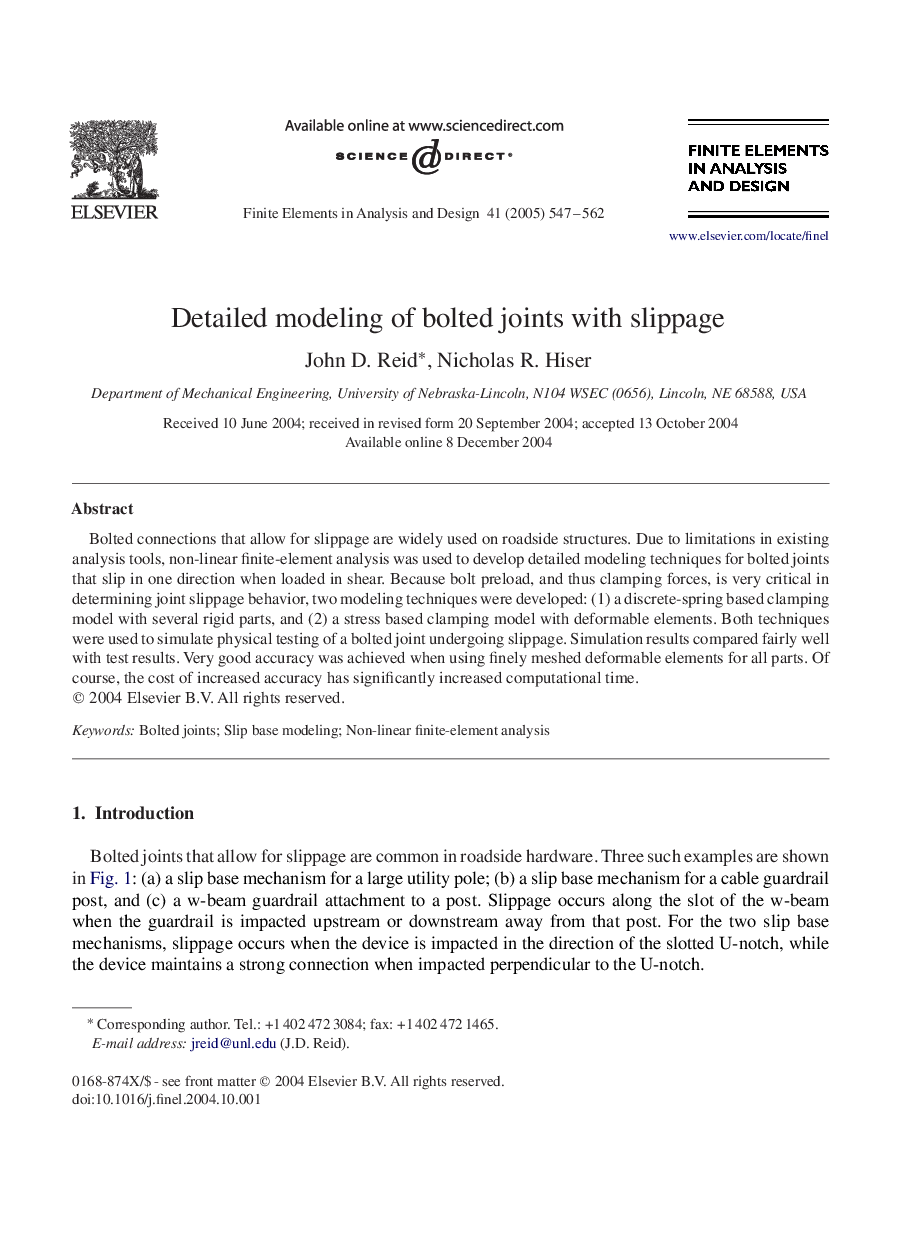| Article ID | Journal | Published Year | Pages | File Type |
|---|---|---|---|---|
| 10354811 | Finite Elements in Analysis and Design | 2005 | 16 Pages |
Abstract
Bolted connections that allow for slippage are widely used on roadside structures. Due to limitations in existing analysis tools, non-linear finite-element analysis was used to develop detailed modeling techniques for bolted joints that slip in one direction when loaded in shear. Because bolt preload, and thus clamping forces, is very critical in determining joint slippage behavior, two modeling techniques were developed: (1) a discrete-spring based clamping model with several rigid parts, and (2) a stress based clamping model with deformable elements. Both techniques were used to simulate physical testing of a bolted joint undergoing slippage. Simulation results compared fairly well with test results. Very good accuracy was achieved when using finely meshed deformable elements for all parts. Of course, the cost of increased accuracy has significantly increased computational time.
Keywords
Related Topics
Physical Sciences and Engineering
Computer Science
Computer Science Applications
Authors
John D. Reid, Nicholas R. Hiser,
